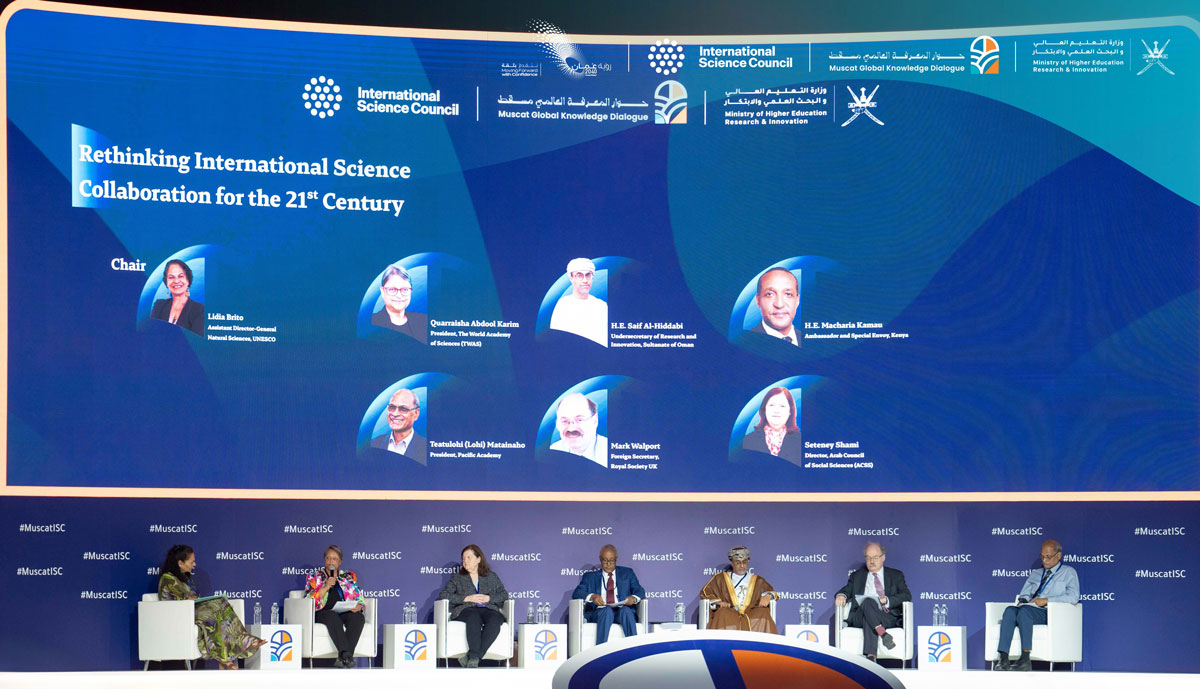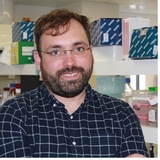
Earlier this year, I had the privilege of joining the Australian delegation at the Global Knowledge Dialogue and 3rd General Assembly of the International Science Council (ISC).
The tandem event took place in Muscat Oman at the end of January.
Over five days it provided a platform and space for hundreds of delegates across 250 member organisations to meet, re-connect, share challenges and ideas, and progress shared agendas on some of the most pressing global challenges of this century. Priority themes were Freedom, Responsibility and Inclusivity in Science; International Science Agenda Setting; The Evolution of Science and Science Systems; Evidence-Based Policymaking; and Science Diplomacy.
Many of the sessions were recorded and are available on the ISC YouTube channel.
It was not lost on delegates that there had been a strategic decision by ISC to both welcome and enable the participation of EMCRs at the event. Traditionally these events have been a very high-level and a more senior delegate exercise in international science policy and cooperation between scientific unions and national science academies.
It was not lost on delegates that there had been a strategic decision by ISC to both welcome and enable the participation of EMCRs at the event.
More on the EMCR perspectives later.
If like me you are unfamiliar with the ISC it emerged in 2018 from the merger of the International Council for Science (ICSU) and International Social Science Council (ISSC). The ISC leverages the integration of natural and social sciences with their distinctive legacies, systems and networks stretching back to their formations in 1931 and 1952 respectively.
I have always been more motivated by the challenge and question than the disciplinary boundaries and methods that often push us into silos. While many may argue about the number of Ms and inclusion of A into the acronym of STEM, I have come to appreciate the ISC definition: ‘science is used to describe the systematic organisation of knowledge that can be rationally explained and reliably applied’*.
To set the backdrop to the meeting, US President Trump was re-writing international norms, a cease fire was taking hold in Gaza, the third anniversary of the Russian-led war in Ukraine loomed, and the civil war in Sudan was worsening for civilians. With more than 56 armed conflicts across the globe, it was little surprise that conversations and questions often touched on the dual uses of science, the responsibility of science and its scientists in a global world.
As a Research Strategist at a top-ranked university, in a remote and highly developed country, the responsibility and contribution that an EMCR makes in a global system of science – and science for sustainable development – is over the horizon most days. Yet the goodwill, passion and determination on display by many of the senior and EMCR delegates served as an important reminder to the common bonds we share, the challenges, and the impacts that cascade by starting small and acting together.
By the end of the conference, I came to appreciate the unique role that the ISC and its members play in shaping global, regional and local objectives and initiatives that have direct impacts on EMCRs.
It remains unanswered how to best engage the EMCR perspectives in the ISC platform and those of many of its members. The challenge is both structural and conceptual. Few if any of the EMCRs I met had any confidence that they would attend the next General Assembly in 2029 or even have financial means to attend the mid-term meeting to be hosted by the China Association for Science and Technology (CAST) in Beijing, in October 2026. Most EMCR delegates I spoke with were quick to highlight the gap in the program for EMCRs as speakers, panel members or session chairs. Further integration of EMCR voices into the formal program will strengthen future dialogues, and the network and impact of the ISC and its members.
The goodwill, passion and determination on display by many of the senior and EMCR delegates served as an important reminder to the common bonds we share, the challenges, and the impacts that cascade by starting small and acting together.
Special thanks to ISC President-elect Robbert Dijkgraaf for attending the morning session for young academies and associations (YAAs), sometimes referred to as young scientist organisations. It is recognised by many, including Robbert, that referring to us as ‘young’ misses the mark and conjures a certain grey haired (if any hair at all) less desirable stereotype of the Fellows of our more senior/elder academies. Given the choice again, I suspect that ‘young’ would not be chosen.
The voices of young academies are increasing in numbers and impact, likely an outcome from growing multi/transdisciplinary focus of their membership. Yet our own lived experiences as the Australian EMCR Forum and that of the analogous North American organisations, that is, the College of New Scholars, Artist and Scientists of the Royal Society of Canada (RSC College) and New Voice program, teach us about different models and the value of conveying diverse voices of EMCRs for dialogues that build emerging leader capabilities and shape national and global futures.
I hope Robert’s interest and election of at least two ISC governing board members who have close ties to EMCR communities will lead to more engagement and dialogue about the challenges and shared benefits of growing YAAs participation in ISC initiatives.
One option would be a formation of a working group of interested YAAs and conversations with ISC staff and board members to draft a vision and action plan that articulates the challenges, opportunities and actions to support scalable and sustainable YAAs engagement in ISC activities. It is evident that building capacity and knowledge in regional and international cooperation among EMCRs will have long-term benefits for science and society, yet the pathway to get there needs more navigators and mentors. It is also evident that the challenges facing the ISC, its members, and the multilateral system are complex, priority setting and resourcing is challenging, and pathways to progress are uncertain. It is my hope that strengthening ISC regional focal points, such as in Asia and the Pacific, Latin America, and a newly announced office in Muscat, will increase accessibility and engagement for regional EMCRs.
It is my hope that strengthening ISC regional focal points, such as in Asia and the Pacific, Latin America, and a newly announced office in Muscat, will increase accessibility and engagement for regional EMCRs.
My real awareness of the ISC and its role in international science systems and policy is a direct outcome of my executive committee role on the EMCR Forum hosted by the Australian Academy of Science. In addition to my engagement with the ISC and its members, my principal motivation in attending the event was meeting face to face and developing relationships with similar organisations of EMCRs to exchange ideas, lessons and challenges that we encounter as ‘national’ associations of EMCRs. After countless conversations with delegates, I gained a better understanding of the nuances of structure, governance, funding mechanisms, meaning and value of membership, core activities, and relationship with more senior academies that are used in different organisations and regions. As expected, it isn’t a one size fits all approach, but there are lessons to be used and adapted for the Australian context and needs.
It is apparent that both national and international science systems are recognising the value of EMCR perspectives in shaping research policies, practices and culture. While I expect opportunities to contribute will grow, we as organisations must make tough choices on what we pursue. Principally we are volunteer-led, bottom-up communities with shared objectives and limited resources and capacity.
With the support and early leadership of the Australian Academy of Science, the EMCR Forum is one of the older organisations that promotes EMCR voices in national science dialogues. Yet with seniority also comes a responsibility to periodically review our unique role and responsibilities, including governance, the meaning of membership, and our value proposition to Australian EMCRs and our stakeholders in universities, industry and government.
It is apparent that both national and international science systems are recognising the value of EMCR perspectives in shaping research policies, practices and culture.
Many thanks to the people of Oman and our gracious hosts at the Ministry of Higher Education, Research and Innovation.
Special thanks to the Australian Academy of Science for their support for my attendance and generous contributions from other ISC members that collectively enabled over 80 delegates from the global south to attend and contribute to the discussions and panels.

Charlie Morgan is a chemical biologist and research strategist at the ANU. He has served as an executive committee member of the EMCR Forum since 2022. He currently leads the Forum’s International Portfolio and previously served as a co-deputy chair. He highly values the opportunities the Forum have catalysed for him to collaborate with EMCRs, academy staff and fellows, to raise awareness and promote EMCR perspectives that shape science dialogs and systems in local, national and most recently international policies and priorities.
* The ISC states it uses this shorthand [STEM] because there is no single word or phrase in English to adequately describe this knowledge community.
© 2025 Australian Academy of Science